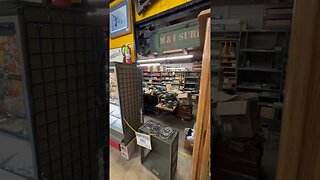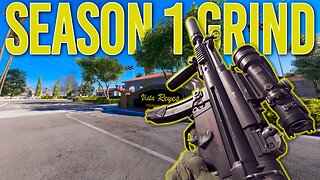Premium Only Content
3 iconic knives 🔪 performing flawlessly
"Khukri", "Khukuri" and "Kukuri" redirect here. For other uses, see Kukri (disambiguation).
Kukri
Knife (Kukri) with Sheath MET 36.25.831a b 001 Apr2017.jpg
A kukri with sheath
Type Bladed melee weapon, utility tool
Place of origin Gorkha Kingdom
Service history
In service c. 7th century – present[1]
Used by Gurkhas and Kiratis (natively)
Wars
Gurkha War
Anglo-Afghan Wars
Sino-Nepalese War
Third Nepal–Tibet War
World War I
World War II
1962 Sino-Indian War
Second Indo-Pakistani War
1967 Sino-Indian War
Third Indo-Pakistani War
Falklands War
Kargil War
War in Afghanistan (1978–present)
Specifications
Mass 450–900 g (1–2 lb)
Length 40–45 cm (16–18 in)
The kukri (English: /ˈkʊkri/)[2] or khukuri (Nepali: खुकुरी, pronounced [kʰukuri]) is a type of short sword with a distinct recurve in its blade originated in Nepal. It serves multiple purposes as a melee weapon and also as a regular cutting tool throughout most of South Asia. The kukri, khukri, and kukkri spellings are of Indian English origin,[3][better source needed] with the original Nepalese English spelling being khukuri.[citation needed]
Originating from the Indian subcontinent, the kukri is the national weapon of Nepal, traditionally serving the role of a basic utility knife for the Nepali-speaking Gurkhas,[4] and consequently is a characteristic weapon of the Nepali Army.[5]
There have been, and still are many myths surrounding the kukri since its earliest recorded use in the 7th century—most notably that a traditional custom revolves around the blade in which it must draw blood, owing to its sole purpose as a fighting weapon, before being sheathed. However, they are frequently used as regular utility tools.[6][7]
MACHETE !!!
A machete (/məˈʃɛti/; Spanish pronunciation: [maˈtʃete]) is a broad blade used either as an agricultural implement similar to an axe, or in combat like a long-bladed knife. The blade is typically 30 to 45 centimetres (12 to 18 in) long and usually under 3 millimetres (1⁄8 in) thick. In the Spanish language, the word is possibly a diminutive form of the word macho, which was used to refer to sledgehammers.[1] Alternatively, its origin may be machaera, the name given by the Romans to the falcata.[2][3] It is the origin of the English language equivalent term matchet,[4] though it is less commonly used. In much of the English-speaking Caribbean, such as Jamaica,[5] Barbados, Guyana, Grenada, and Trinidad and Tobago, the term cutlass is used for these agricultural tools.[6]
-
 1:00
1:00
Doggorunning
1 year agoWe Have More To Look at in The Supply Room! Subscribe
118 -
 1:38:28
1:38:28
Glenn Greenwald
6 hours agoThe Fraudulent GOP War Against Tucker and Nick Fuentes; Dick Cheney: Hero of the Resistance; Lindsey Graham's Deranged RJC Comments | SYSTEM UPDATE #544
82.9K91 -
 LIVE
LIVE
ThePope_Live
1 hour agoRedsack with the boys Cheap, Jah and Nova!
106 watching -
 LIVE
LIVE
Hernandez2787
4 hours agoArc Raiders - 1st Playthrough/ Celebrating My Anniversary as Sergeant First Class in the US Army
53 watching -
 48:42
48:42
Donald Trump Jr.
6 hours agoCommunism vs Common Sense, What's Next for NYC? | TRIGGERED Ep.289
130K266 -
 LIVE
LIVE
JahBlessCreates
1 hour ago🎉Big Vibes - Gaming with Cheap, Pope, and Nova
29 watching -
 1:31:25
1:31:25
The Charlie Kirk Show
5 hours agoTHOUGHTCRIME Ep. 104 — Post-Election Palette Cleanser + Tucker/Fuentes Interview Reaction
91.7K30 -
 LIVE
LIVE
tminnzy
4 hours agoSmooth Moves Only 💨 | Naraka: Bladepoint Chill Gameplay | !gx
30 watching -
 1:04:33
1:04:33
BonginoReport
6 hours agoWill The LA Dodgers Dodge WH Visit?! - Nightly Scroll w/ Hayley Caronia (Ep.172) - 11/06/2025
59.3K71 -
 3:23:13
3:23:13
Tundra Tactical
7 hours ago $0.02 earnedDadlefield Game Night BF6 New Update Weapon Grind
35.2K5